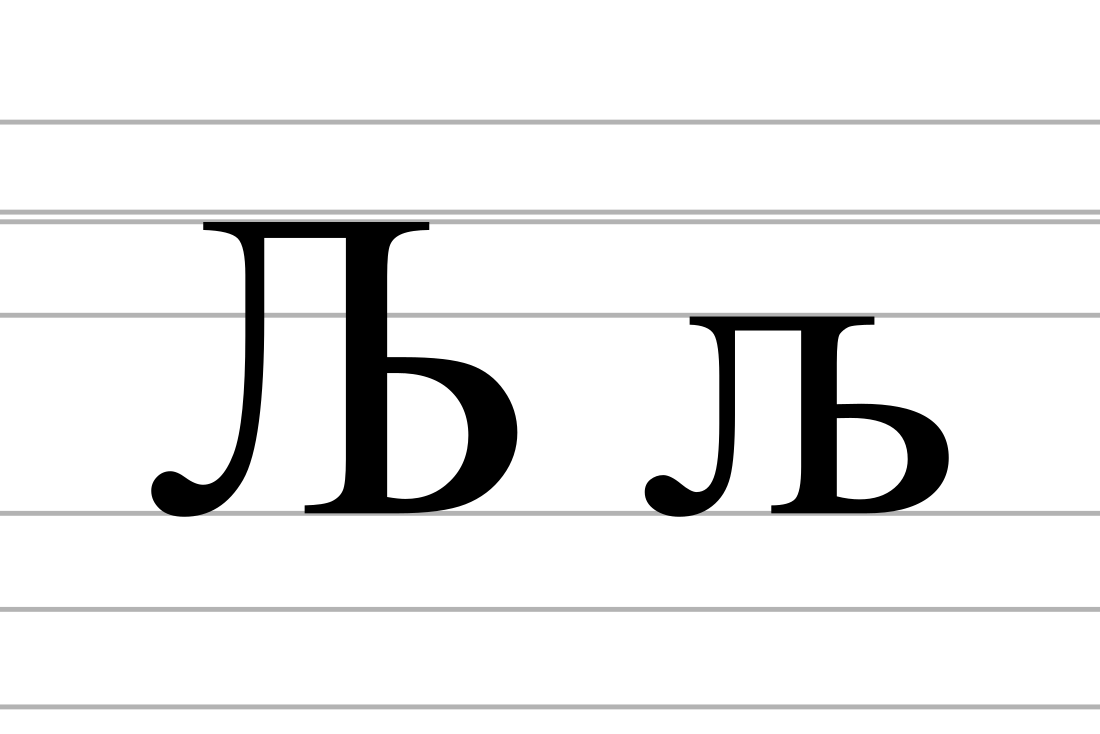Top Qs
Timeline
Chat
Perspective
Lje
Cyrillic letter representing /ʎ/ in Macedonian, Serbian, and other languages From Wikipedia, the free encyclopedia
Remove ads
Lje, or Lle (Љ љ; italics: Љ љ; also called lye) is a letter of the Cyrillic script.

Lje represents a palatal lateral /ʎ/, a sound similar (but not identical) to the palatalized alveolar lateral approximant /lʲ/, which is in some languages represented by the digraph ⟨ль⟩ and pronounced /lʲ/ like the ⟨ll⟩ in "million". Compare Latvian ⟨ļ⟩, Slovak ⟨ľ⟩, Hungarian ⟨ly⟩, Portuguese ⟨lh⟩, Spanish ⟨ll⟩ and Italian ⟨gl⟩.
Lje is a ligature of ⟨л⟩ and ⟨ь⟩.[1] It was invented by Vuk Stefanović Karadžić for use in his 1818 dictionary, replacing the earlier digraph ⟨ль⟩.[1] It corresponds to the digraph ⟨Lj⟩ in Gaj's Latin alphabet for Serbo-Croatian.[1]
It is today used in Macedonian, variants of Serbo-Croatian when written in Cyrillic (Bosnian, Montenegrin and Serbian), and Itelmen.
It was also once used in the Udege language, in the Lithuanian Cyrillic alphabet, and in the Albanian Cyrillic alphabet.
Lje is commonly transliterated as lj but can also be transliterated as ľ, or ļ.
Remove ads
Related letters and other similar characters
- Л л : Cyrillic letter El
- Ь ь : Cyrillic letter Soft sign
- Ll : Spanish double L in the absence of Yeísmo
- Ľ ľ : Latin letter L with caron - a Slovak letter
- Ĺ ĺ : Latin letter L with acute - another Slovak letter
- Ļ ļ : Latin letter L with cedilla - a Latvian letter
- Ly : Hungarian ly
- Њ њ : Cyrillic letter Nje
- LJ Lj lj : Compatibility Unicode characters
Computing codes
Remove ads
References
External links
Wikiwand - on
Seamless Wikipedia browsing. On steroids.
Remove ads

